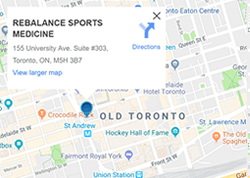The Dreaded Mummy Tummy
 The female body undergoes drastic changes during pregnancy as hormones relax the ligamentous structures of the pelvis, the cervix widens and most noticeably our stomachs grow and our tissues stretch to accommodate the child growing inside of us. As adaptable as our bodies can be these changes during pregnancy can continue to impact us long after childbirth.
The female body undergoes drastic changes during pregnancy as hormones relax the ligamentous structures of the pelvis, the cervix widens and most noticeably our stomachs grow and our tissues stretch to accommodate the child growing inside of us. As adaptable as our bodies can be these changes during pregnancy can continue to impact us long after childbirth.
A diastasis rectus abdominus (DRA) or “mummy tummy” is a splitting of the rectus abdominus or “six pack” muscles as the connective tissue between them (the linea alba) stretches. It is believed that 100% of women in their third trimester will experience a DRA to some extent (Gilleard and Brown, 1996). The most spontaneous healing occurs during the first 8 weeks postnatal, however the rectus abdominus may remain abnormally widened after this period. Without intervention it has been shown that this distance between the abdominal muscles remains unchanged even a year later (Coldron et al 2008). Without proper support of the rectus abdominus the tummy may sag or dome. Of the women with DRA, 66% of them also present with pelvic floor dysfunction, complaining of symptoms such as pelvic or low back pain and stress and urge incontinence (Spitznagle 2007).
 Proper control of the abdominal wall is crucial in maintaining stability of the thorax, the low back and the pelvic girdle, so what can you do if you think you have a DRA? The first line of defence is prevention! While you are pregnant avoiding activities such as sit ups, yoga poses which stretch the abdominal area or positions such as kneeling on all fours or cat and cow stretches helps to reduce pressure on the abdominal wall. In the first 8 weeks postnatal, there is some evidence that abdominal binding may be beneficial to approximate the rectus abdominus muscle and provide abdominal support during that crucial healing period. Research has shown that wearing a post-natal belt immediately after birth made a statistically significant decrease in waist circumference, inter-recti muscle distance as well as significantly increasing abdominal muscle strength (El-Mekawy et al 2013).
Proper control of the abdominal wall is crucial in maintaining stability of the thorax, the low back and the pelvic girdle, so what can you do if you think you have a DRA? The first line of defence is prevention! While you are pregnant avoiding activities such as sit ups, yoga poses which stretch the abdominal area or positions such as kneeling on all fours or cat and cow stretches helps to reduce pressure on the abdominal wall. In the first 8 weeks postnatal, there is some evidence that abdominal binding may be beneficial to approximate the rectus abdominus muscle and provide abdominal support during that crucial healing period. Research has shown that wearing a post-natal belt immediately after birth made a statistically significant decrease in waist circumference, inter-recti muscle distance as well as significantly increasing abdominal muscle strength (El-Mekawy et al 2013).
Most importantly returning to an exercise program which focuses on the inner core unit is crucial for regaining strength of the abdominal wall and stability of the surrounding structures. The inner core unit is comprised of four muscles, the diaphragm, the multifidus, the transverse abdominus and the muscles of the pelvic floor. These four muscle groups work together to stabilize the pelvic girdle, low back and thorax. It is important to tailor your exercises to your level of healing, the size of your diastasis recti and your ability to recruit these muscles prior to giving birth. That means a tailored exercise program during pregnancy can be beneficial in recovery postnatal!
Working with a trained pelvic floor physiotherapist who will assess your posture, teach you proper abdominal recruitment strategies and improve your inner core unit strength and endurance can help to reduce your diastasis recti and get you back to all of your activities!
References:
- Gilleard and Brown : “Structure and Function of the Abdominal Muscles in Primigravid Subjects During Pregnancy and the Immediate Postbirth Period”,Physical Therapy, 76(7):750-762, 1997.
- Coldron et al. : “Postpartum characteristics of rectus abdominis on ultrasound imaging”, Manual Therapy,13(2):112–121, 1998
- Spitznagle et al. : “Prevalence of diastasis recti abdominis in a urogynecological patient population” International Urogynecology Journal, 18(3) 321-328, 2007
- El-Mekawy et al : “Effect of abdominal exercises versus abdominal support belt on post-partum abdominal efficiency and rectus separation”, International Journal of Medical, Health, Biomedical, Bioengineering and Pharmaceutical Engineering, 7(1)44-48, 2013
Rebalance Toronto
Rebalance Sports Medicine is a multidisciplinary clinic in downtown Toronto offering physiotherapy, chiropractic, registered massage therapy, sports medicine, naturopathy, Pilates and more.



 What to Expect From Your First Physiotherapy Visit
What to Expect From Your First Physiotherapy Visit The Benefits of Fascial Stretch Therapy [Demo]
The Benefits of Fascial Stretch Therapy [Demo] How Does Physiotherapy Work?
How Does Physiotherapy Work? Best Exercises for Low Back Pain
Best Exercises for Low Back Pain